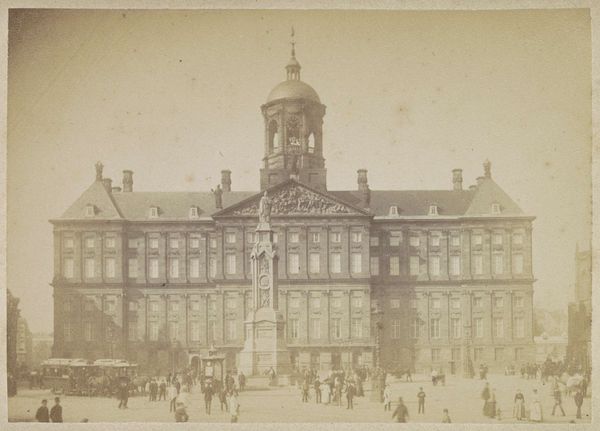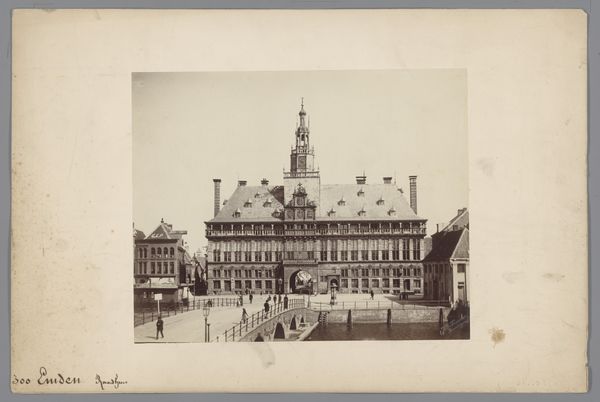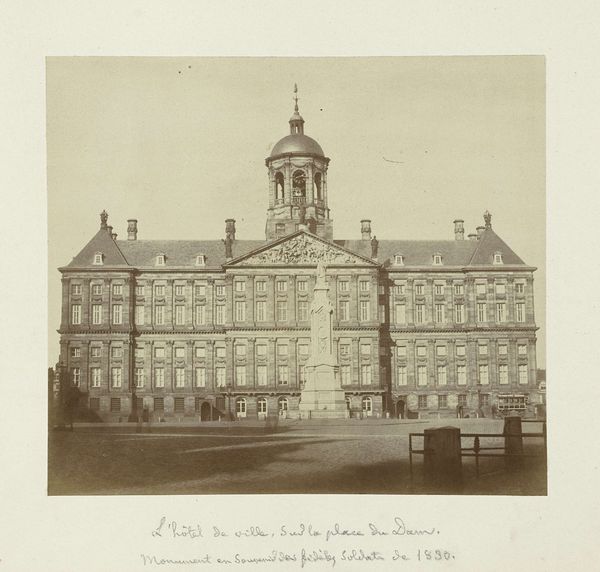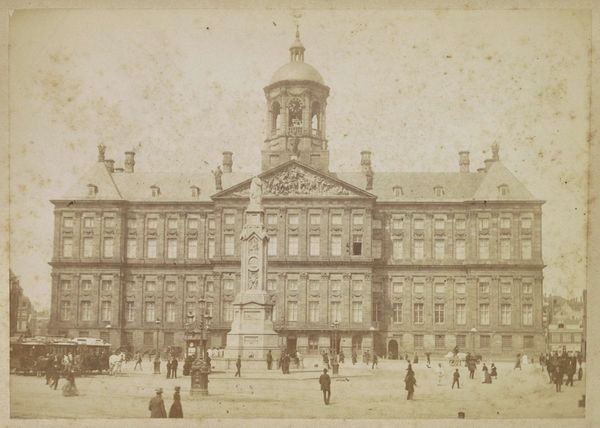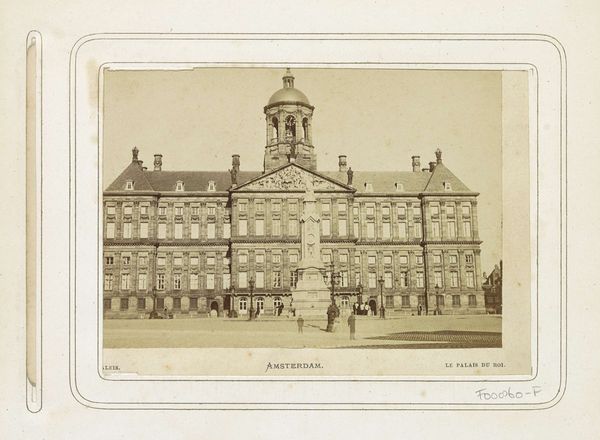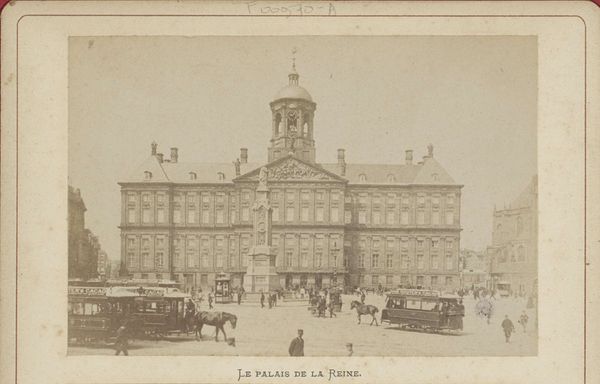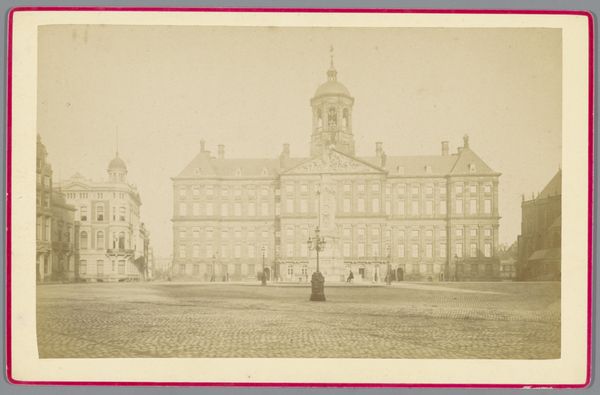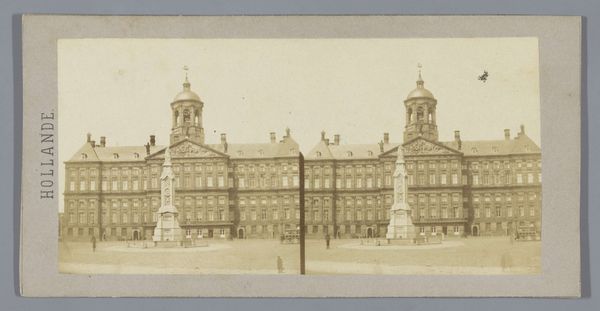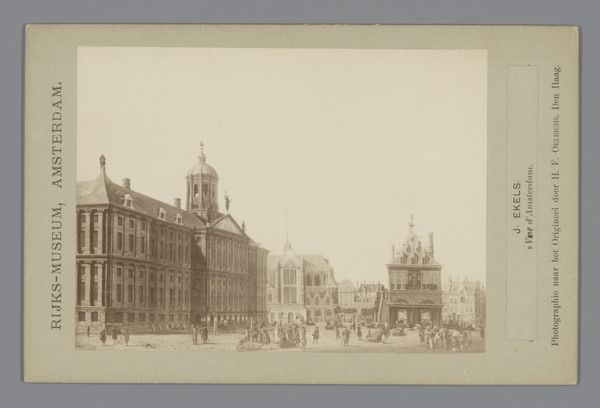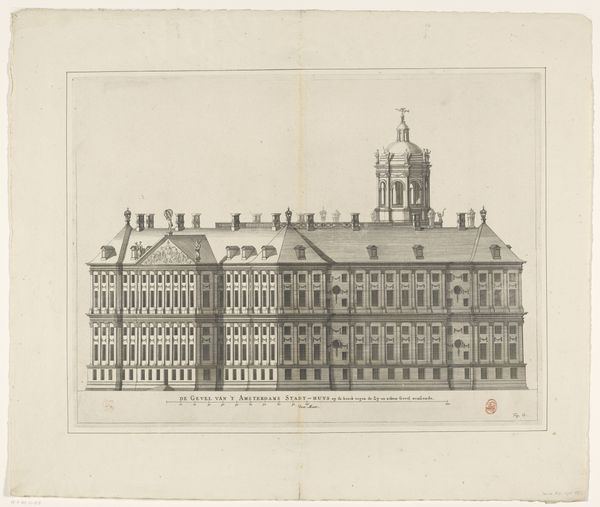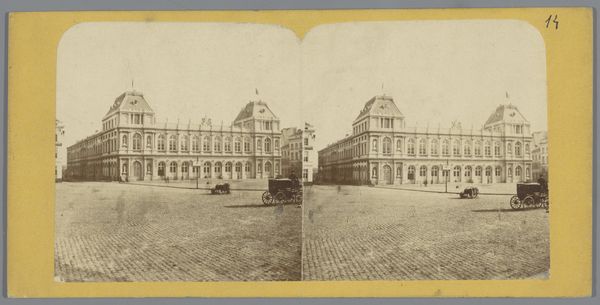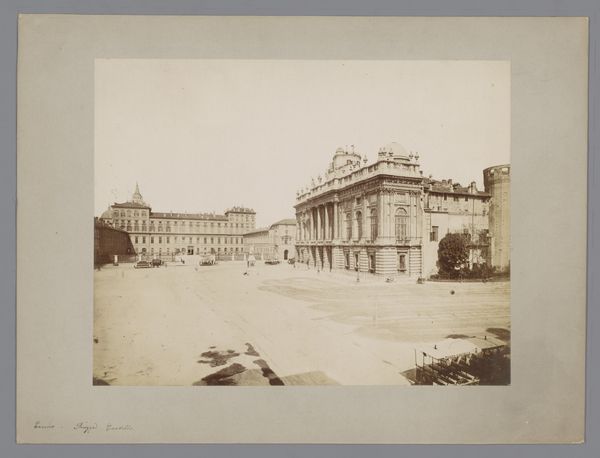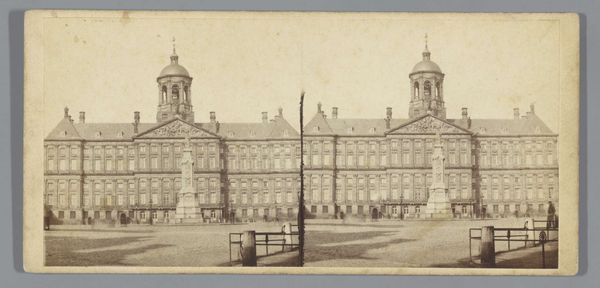
Paleis op de Dam, met daarvoor de Eendracht, ook wel Naatje op de Dam c. 1860 - 1875
0:00
0:00
anonymous
Rijksmuseum
Dimensions: height 82 mm, width 82 mm, height 145 mm, width 234 mm
Copyright: Rijks Museum: Open Domain
Curator: This gelatin-silver print, dating from around 1860 to 1875, presents a captivating view of the Paleis op de Dam, or Royal Palace, in Amsterdam. Its creation is credited to an anonymous artist, adding a layer of mystery to the image. Editor: It’s striking how the monument, "Naatje op de Dam," in the foreground completely anchors the whole composition. The soft sepia tones give the scene a sense of nostalgia, almost like peering into a distant memory. Curator: That monument is actually the Eendracht, or Unity, designed in the neoclassical style. This piece, together with the palace, are a testament to the powerful political and social atmosphere of Amsterdam during that period, don’t you think? Editor: Absolutely, and look at how photography itself, a relatively new medium at the time, was deployed. It’s a conscious effort to solidify the image of national pride and civic duty for popular consumption. Consider the labor that went into producing the print, from developing the glass negatives to making the prints. Curator: Yes, there is a carefully staged element here, absolutely. Notice the people scattered in the foreground. They are frozen in time and they really humanize this grand architecture. Editor: Those figures also represent an essential component. Their inclusion turns the grand architecture from symbols of power and governance to icons of daily life, commerce, and even spectacle. It's all tied to the urban fabric of Amsterdam. Curator: You’re so right, considering how centrally positioned Dam Square has always been throughout the political and cultural shifts in Amsterdam. Even this anonymous photograph serves as an unintentional piece of that historical puzzle. Editor: For me, its evocative nature comes from its physicality. From its tangible link to the era, this gelatin silver print reminds us that even depictions of power are, at their core, material objects—products of labor, tools for influencing perception, all subject to market demands. Curator: It truly opens up interesting discussions when looking at the cross-section of artistic medium, socio-political influences, and human history—especially the democratization of images that photography initiated. Editor: Yes. This seemingly simple photograph, from a certain angle, shows so much about the era’s intersection between power structures, means of artistic production, and the daily grind.
Comments
No comments
Be the first to comment and join the conversation on the ultimate creative platform.
